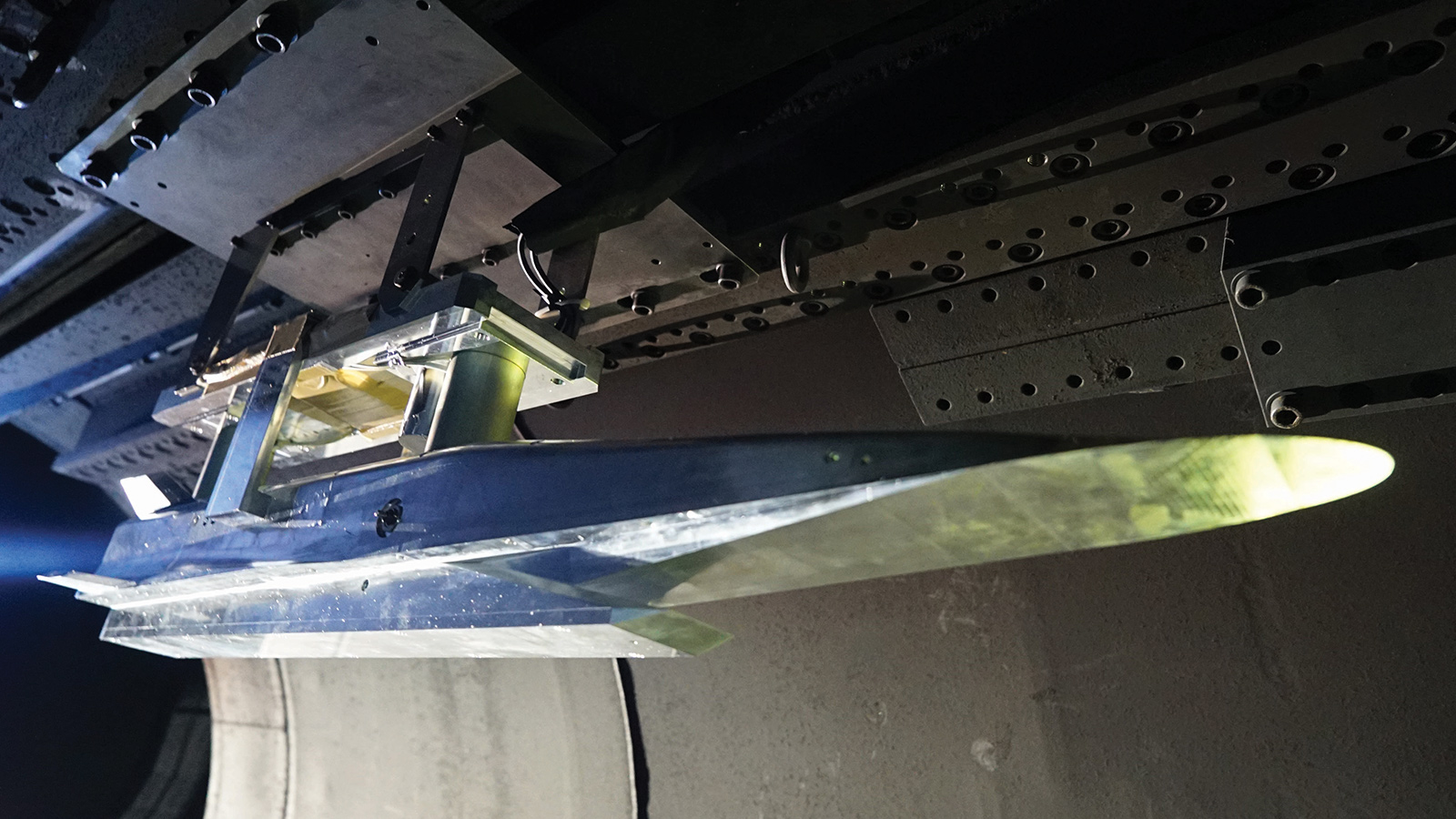Stay Up to Date
Submit your email address to receive the latest industry and Aerospace America news.
The Hypersonic Technologies and Aerospace Planes Technical Committee works to expand the hypersonic knowledge base and promote continued hypersonic technology progress through ground and flight testing.
About a dozen companies worldwide have committed to flying hypersonic aircraft or space planes commercially, with target dates ranging from 2022 to 2030. Research took place this year that could help the companies as they work toward flight tests.
In June, the Air Force Research Laboratory, or AFRL, and Generation Orbit Launch Services Inc. of Georgia completed an integrated engine firing of the liquid-fueled Hadley engine, a full-scale prototype of the engine that will propel GOLauncher1, which in October the U.S. Air Force designated as the X-60A. This liquid-fueled, hypersonic testbed vehicle is in development by Generation Orbit for the AFRL in Ohio. The vehicle is designed to provide affordable and regular access to high dynamic pressure flight conditions between Mach 5 and Mach 8 to a wide range of payloads for fundamental research and technology development. The first flight is planned for late 2019.
In October, the Air Force’s Arnold Engineering Development Complex, AEDC, stood up a new branch specifically to coordinate hypersonic activities. This new organization will coordinate hypersonic tests and maintain execution authority for the Hypersonic Test and Evaluation Investment Program and the High Speed Systems Test Technology program. The organization also was assigned as the lead developmental test organization authority for all Air Force hypersonic programs. Also, significant AEDC facility improvements were completed this year or were scheduled to be completed. A Mach 18 (approximate) test capability was to be established at the Hypervelocity Wind Tunnel 9 at AEDC’s White Oak facility in Maryland by December. A new air breathing high Mach capability was established at AEDC in Tennessee. Also, the performance envelope was expanded at AEDC’s arc jet facilities.
In Europe, the German Aerospace Center, DLR, completed a static firing test of an instrumented ceramic matrix composite nozzle with an extension made of carbon fiber reinforced polymer under a project called ATEK, a German acronym for space propulsion technologies for small launchers. Also in Germany, in September, the DLR started tests in the High Enthalpy Shock Tunnel Göttingen on a 1:2.5-scale model of the glide vehicle in development under Europe’s High Speed Experimental Fly Vehicles-International initiative, or HEXAFLY-INT. This vehicle will investigate surface imperfections on hypersonic boundary layer transition. In June, the Italian Space Agency’s Italian Re-Entry Nacelle program validated a low-ballistic coefficient, deployable heat shield in the CIRA SCIROCCO plasma wind tunnel, with flight tests to follow in 2019. CIRA in partnership with AFRL completed first prototype demonstrations of Ultra-High-Temperature Ceramic coatings in May. The European Commission-funded Stratofly project started in 2018 to investigate the feasibility of high-speed passenger flight at stratospheric altitudes.
Turning to Asia, the Japan Aerospace Exploration Agency, JAXA, completed a hypersonic campaign in its Chofu HWT2 tunnel for the development of its H-2 Transfer Vehicle Small Re-entry Capsule. The measured aerodynamic characteristics of the reaction control system gas-jet interactions agreed well with computations. In September, the HTV and capsule berthed at the International Space Station. Meanwhile, the results of wind tunnel tests on the MoDKI scramjet showed that margins were met for three-component aerodynamic coefficients longitudinal stability at Mach 6.7. In August, the China Academy of Aerospace conducted its first successful flight of the Xingkong-2 or “Starry Sky-2,” according to Fox News, marking China’s first disclosure of work on a waverider design. The flight has fueled defense research outside of China, because a waverider may challenge current anti-missile systems, designed to protect against slower cruise and ballistic missiles.
Contributors: Barry Hellman, AFRL; A.J. Piplica, Generation Orbit; Bayindir H. Saracoglu, Von Karman Institute; Alexander Wagner, the German Aerospace Center, DLR; Ali Guelhan, DLR; Wolfgang Jung, DLR; Tanno Hideyuki, JAXA; Dan Marren, Arnold Engineering Development Complex; Raffaele Savino, University of Naples Federico II
Editor’s note: U.S. Air Force Capt. Travis Odom is a hypersonics research engineer at Wright-Patterson Air Force Base, Ohio. Greg Johnston is a hypersonic flight test lead.
Photo: Japan tested its supersonic combustion ramjet MoDKI in the Kakuda wind tunnel this year. MoDKI stands for Model of Demonstration Kakuda Initiative. Credit: Japan Aerospace Exploration Agency, JAXA
Stay Up to Date
Submit your email address to receive the latest industry and Aerospace America news.




